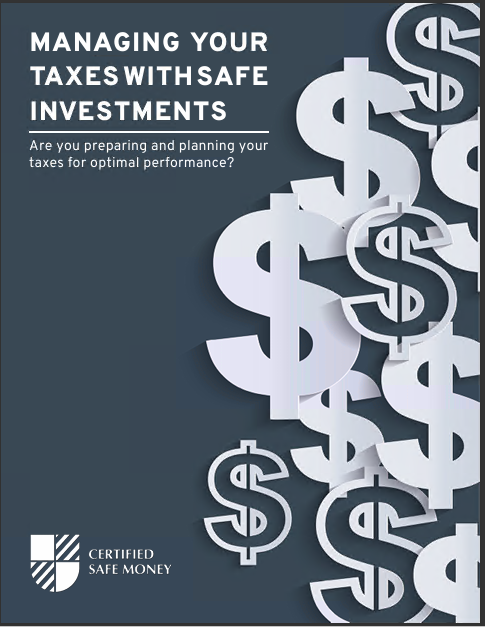Key Takeaways
-
Fixed index annuities (FIAs) offer a balance of safety and growth potential, protecting your principal while providing potential for higher returns compared to traditional fixed annuities.
-
Despite their benefits, FIAs come with drawbacks like limited liquidity, complicated fee structures, and caps on potential gains, making them less flexible than other investment methods.
Understanding Fixed Index Annuities: What They Are and How They Work
When planning for your financial future, it’s natural to look for options that blend safety and growth. Fixed index annuities, commonly known as FIAs, are designed to meet this exact need. They offer a unique middle ground, providing protection for your original investment while still allowing you to benefit from market gains. But just like any financial product, FIAs aren’t perfect. They come with their own set of pros and cons, and understanding these clearly can help you decide if they’re the right choice for your financial strategy.
In this guide, you’ll explore four critical benefits and four significant drawbacks of fixed index annuities, providing you with a clear, balanced perspective.
Benefit #1: Protection from Market Losses
One of the main attractions of fixed index annuities is their ability to shield you from market downturns. Unlike traditional investment products such as stocks or mutual funds, FIAs promise that your principal—the money you initially invest—won’t decline due to market performance.
How Does This Work?
Your money is linked to the performance of a market index, such as the S&P 500. When the index goes up, you receive a portion of the gains, but crucially, when the index goes down, your investment doesn’t lose value. This protective feature can offer significant peace of mind, particularly if you’re nearing retirement or risk-averse.
Benefit #2: Opportunity for Moderate Growth
Although FIAs don’t offer the high returns you might achieve with more aggressive investments like stocks, they can still provide reasonable growth over time. By linking returns to a market index, they have the potential to deliver higher returns compared to traditional fixed-rate annuities or standard savings accounts.
Earning Potential Explained
Your earnings from an FIA depend on various factors, such as the index’s performance, the participation rate (how much of the index gain you receive), and the cap rate (the maximum gain you can earn in a given period, usually one year). While you won’t capture all the market gains, you still benefit from upswings without risking your principal.
Benefit #3: Guaranteed Income for Life
Many FIAs offer optional riders that provide guaranteed lifetime income, turning your savings into a predictable and stable income stream during retirement. This income protection can be particularly appealing in an era where pensions are increasingly rare.
Securing Your Retirement
With lifetime income riders, the insurance company promises to pay you a predetermined amount each month or year for as long as you live, regardless of market fluctuations or even if your initial investment eventually reaches zero. This can significantly enhance your retirement security, helping you budget confidently through your retirement years.
Benefit #4: Tax Advantages
Fixed index annuities provide attractive tax benefits. Your earnings within an FIA grow tax-deferred, meaning you won’t owe taxes until you withdraw the money. This can substantially boost your savings over the years, allowing your investment to compound more efficiently.
Maximizing Your Growth
The tax deferral means you can let your investment grow without annual tax payments eating into your returns. When you’re eventually ready to withdraw funds, usually after age 59½, you’ll typically be in a lower tax bracket, allowing you to potentially pay less in taxes overall.
Drawback #1: Limited Access to Your Money
One major downside of fixed index annuities is their lack of liquidity. Generally, when you invest in an FIA, you’re committing your money for a set period—often between 5 to 10 years or even longer.
Understanding Surrender Charges
If you withdraw money early, you’ll likely face substantial surrender charges. These penalties gradually decrease over the duration of the annuity contract but can significantly reduce your flexibility if unexpected expenses arise.
Drawback #2: Caps and Limits on Earnings
While FIAs protect against market downturns, this protection comes at a cost—limited upside potential. Insurance companies usually impose caps or participation rates that restrict how much you can earn in strong market conditions.
Limits Explained
If your FIA has an annual cap of 6%, and the market index increases by 12%, you only earn the capped 6%. While still beneficial, this structure can leave you missing out on substantial growth during strong market years, making FIAs less attractive if you’re aiming for aggressive growth.
Drawback #3: Complex Fee Structures
FIAs often involve various fees, some of which can be confusing and opaque. Management fees, rider fees, and index-linked fees can accumulate, affecting your overall returns. Sometimes, these fees might be hard to discern clearly at the outset.
Know What You’re Paying For
It’s essential to thoroughly understand the fees before committing to an FIA. High fees can significantly impact your returns, and since these are usually deducted directly from your earnings or principal, your actual gains could be considerably less than expected.
Drawback #4: Inflation Risk
Fixed index annuities can be susceptible to inflation risk. Although your principal is protected from market losses, the fixed or capped returns may not keep pace with inflation over time, eroding your purchasing power.
The Hidden Cost of Inflation
Inflation means the value of money declines over time. If your FIA only earns modest returns, inflation could potentially eat away at the real value of your savings. Over the long term, this might leave you with less financial security than anticipated.
Making the Right Decision About FIAs
Understanding the detailed benefits and drawbacks of fixed index annuities is essential for deciding if they’re a suitable fit for your financial goals. Consider your risk tolerance, investment horizon, liquidity needs, and retirement plans carefully. FIAs can be highly effective for the right person, offering a rare combination of market-linked growth and guaranteed protections.
However, they’re not ideal for everyone. If flexibility, high growth potential, or inflation protection are your top priorities, other financial vehicles may be more appropriate.
Ultimately, the decision to use a fixed index annuity in your financial planning strategy depends heavily on your personal circumstances, retirement timeline, and financial objectives. Working with a financial advisor can further clarify if this approach aligns well with your individual needs and goals.
Understanding Your Options for a Secure Financial Future
Exploring fixed index annuities thoroughly can enhance your financial knowledge, equipping you to make informed decisions about your future. Balancing the guaranteed safety FIAs provide against their limitations ensures you choose wisely, aligning your choice closely with your long-term goals.
Remember, the best investment is one that matches your unique risk tolerance, financial objectives, and lifestyle. Whether or not FIAs make sense for you, being well-informed puts you one step closer to securing a stable and prosperous financial future.











